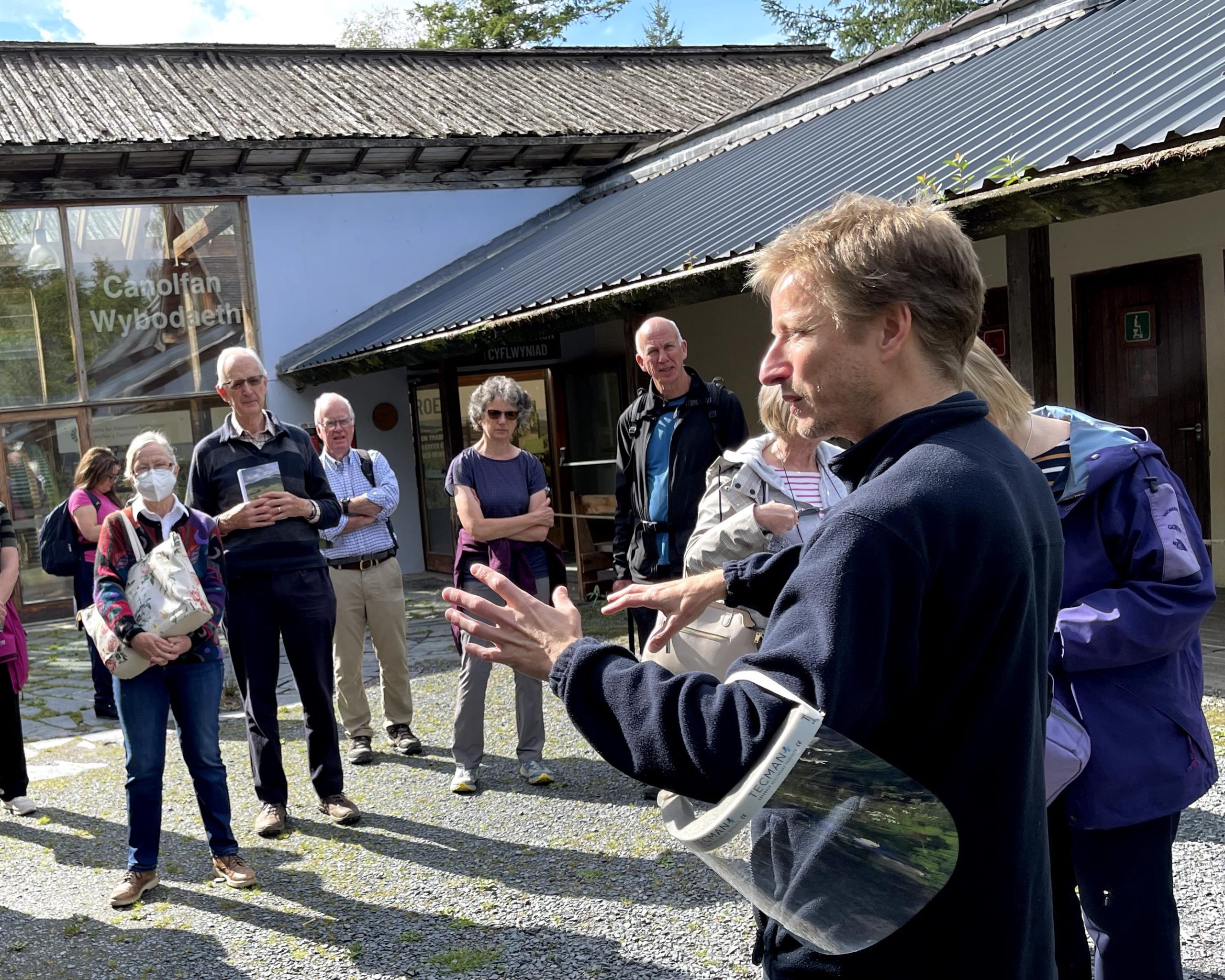President Tom writes (with pictures also additional pictures from John W):
A group of 20 from Wellington Rotary, (but also including District Governor Robyn, Past District Governor Trevor and other guests), overcame all obstacles to visit the Centre for Alternative Technology at Machynlleth for a day out. We were taking advantage of the free one year’s membership being offered to Rotarians. We heard on the day before our visit that the café was not functioning because of COVID issues, the water-powered lift was not being used, so we would have to walk up the hill, and the taxis – at nearly the last minute – decided that picking up schoolchildren was more important than taking Rotarians back to the station. Fortunately, some of our number had decided to drive, and were volunteered to shuttle us back to the station instead – thank you all!
Those of us that travelled in the relatively ecologically friendly train from Wellington, had a relaxing journey, while enjoying the attractive countryside. It was a very pleasant, almost summer’s day – rather better than many we’ve been having recently.
We were welcomed on arrival with a cup of tea or coffee, and then had a most interesting tour. Our guide, Joel, was brilliant at explaining the various issues in understandable terms. CAT was founded nearly 50 years ago, and even then, they were encouraging solar panels and wind turbines.
We were told how we could build houses with compacted earth, or with good insulation such as straw or hemp (though you need a licence to grow this!). We learned that the power of a wind-turbine is proportional to the cube of the blade length – so doubling the length gives 8-times the output (provided of course that the wind blows!) A big turbine is much more effective than lots of small ones.
The most interesting part for me was seeing an air-source heat pump, and being told that it gives three times the heat output that can be provided just by electricity alone, making the running cost potentially equivalent to the present cost of heating with gas. The problem is the high expense of installation, which includes installing new and larger radiators, as they have to work at lower water temperatures.
All in all, it was an enjoyable and interesting visit. The centre has developed greatly since I was last there, and they do a lot of courses, including training architects from around the world. Go and see for yourselves – some of their ideas may well be how we live in future.
Tom









